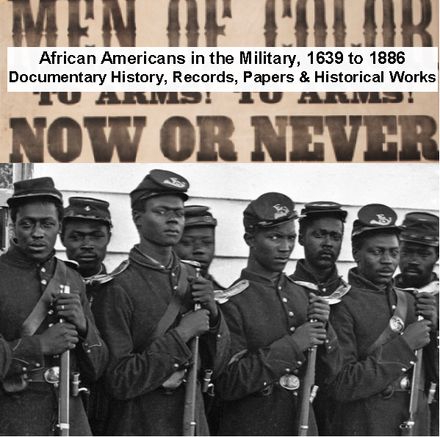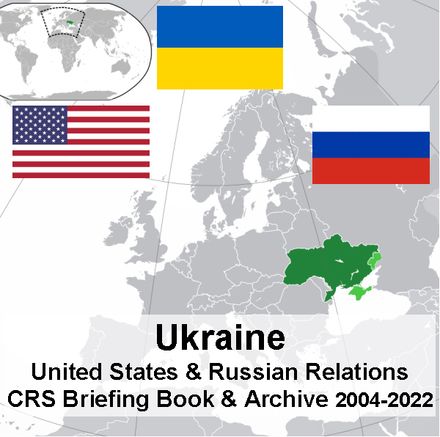$19.95
Civil War: The Mathew B. Brady Photograph Collection - Download
Civil War: The Mathew B. Brady Photograph Collection of Civil War Scenes & Era Personalities with Finding Aids and Reference Material
11,431 pages of material.
6,050 Civil War related photographs from the Mathew Brady Studios along with a 1,190-page index/table of contents finding aid and 4,191 pages of reference material.
Text searches can be made across all textual material in this collection.
The photographs in this collection are from the Records of the Office of the Chief Signal Officer, Record Group 111, and Records of the War Department General and Special Staffs, Record Group 165, held at the Still Picture Branch of the National Archives and Records Administration (NARA). The images include photographs from the Matthew B. Brady collection, purchased for $27,840 by the War Department in 1874 and 1875, photographs from the Quartermaster's Department of the Corps of Engineers, and photographs private citizens donated to the War Department. These collections were once part of the War Department Library.
This collection consists of 6,050 images from glass plates (and modern derivative copies including prints, duplicate negatives, and interpositives) which were produced by the photographer Mathew Brady and his associates at the Brady Studios. Many images show battlefields, camps, towns, and people touched by the Civil War. Photographs show camp life, routines, war preparations, the moments just prior to battle, and the aftermath of battle. Also of interest in this series are views of Union and Confederate naval vessels, railroads, supply dumps, and hospitals.
The most well-known individual associated with Civil War photography is Mathew B. Brady (1823-1896). This is in spite of the fact that Brady may have only personally taken a few photographs of the war. Brady employed many of the other well-known photographers before and at points during the war. Alexander Gardner and James F. Gibson at different times managed Brady's Washington studio. Timothy O'Sullivan, James Gardner, and Egbert Guy Fox were also employed by Brady during the Civil War.
Brady was one of the earliest practitioners of daguerreotype in the United States and soon became a prolific portrait photographer. In his New York and Washington, DC studios, he and his assistants photographed many of the luminaries of the 1850s and 1860s. With the outbreak of the Civil War in 1861, Brady endeavored to record the progress of the war with his camera. He and his associates, notably Alexander Gardner, George Barnard, and Timothy O'Sullivan, traveled throughout the eastern part of the country and photographed many of the battlefields, towns, and people touched by the war. In addition, Brady photographed many of the distinguished political and military personalities who found time to stop by his Washington, DC studio. The result was a collection of some 12,000 images which comprised a rich visual document of the Civil War period.
The Brady Studio photographed and made portraits of many senior Union officers in the war, including Ulysses S. Grant, Nathaniel Banks, Don Carlos Buell, Ambrose Burnside, Benjamin Butler, Joshua Chamberlain, George Custer, David Farragut, John Gibbon, Winfield Hancock, Samuel Heintzelman, Joseph Hooker, Oliver Howard, David Hunter, John A. Logan, Irvin McDowell, George McClellan, James McPherson, George Meade, Montgomery C. Meigs, David Dixon Porter, William Rosecrans, John Schofield, William Sherman, Daniel Sickles, Henry Warner Slocum, George Stoneman, Edwin V. Sumner, George Thomas, Emory Upton, James Wadsworth, and Lew Wallace.
On the Confederate side, Brady photographed Jefferson Davis, P. G. T. Beauregard, Stonewall Jackson, James Longstreet, Lord Lyons, James Henry Hammond, and Robert E. Lee (Lee's first session with Brady was in 1845 as a lieutenant colonel in the U.S. Army, his final after the war in Richmond, Virginia).
After the Civil War, business for Brady's studios gradually declined. Many negatives were lost due to neglect and disinterest in the years after the war. Ken Burns in his 1990 documentary on the Civil War claimed that glass plate negatives were often sold to gardeners, not for their images, but for the glass itself to be used in greenhouses and cold frames. As Burns said in his 1993 commencement address at the University of Delaware, "In the years that followed the end of the war, the sun slowly burned away their filmy images and they were lost."
In July 1874 Secretary of War William Belknap purchased part of Brady's collection of negatives, approximately 2,250 plates, at public auction for $2,500 because of Brady's bankruptcy. In April 1875, the War Department purchased 3,735 plates directly from Brady under express Congressional authorization to "acquire a full and perfect title to secure and purchase the remainder now in possession of the artists [for] $25,000." The plates languished in the War Department's War Records Office until 1886 when they were transferred to the Supply Division. In 1888 the collection was transferred to the War Department Library. In 1921 the Office of the Chief Signal Officer secured custody of the collection in order to make duplicate prints and provide copies to the public. The collection was accessioned to the National Archives in 1940.
Finding Aids
In addition to the 6,050 pages of photos described above, included in this collection is a 1,190-page finding aid that includes a thumbnail of each photo and list each photo's title/description and identification numbers.
Photograph Reference Material
Also included are the following reference material covering photographs in the collection that can be used to identify photographs in the collection.
Civil War Photographs 1861-1865 A Catalog of Copy Negatives Made from Originals Selected from the Mathew B. Brady Collection in the Prints and Photographs Division of the Library of Congress
An 84-page textual itemized cataloging with index of the most significant photos in the Brady collection. Compiled in 1961 by Hirst D. Milhollen and Donald H. Mugridge of the Reference Department of the Library of Congress. Milhollen was a Specialist in Photography, Prints and Photographs Division and Mugridge was a Specialist in American History, General Reference and Bibliography Division. This guide includes a history of the collection and covers details about it acquisition by the Library of Congress.
This guide states, "The 1,047 copy negatives here listed are more than a mere selection from the Brady Collection, for they have been carefully chosen to include the best and most interesting photographs of the several kinds into which the collection may be classified.”
The Photographic History of the Civil War
The 3,497-page "Photographic History of the Civil War in Ten Volumes." by Francis Trevelyan Miller, was published in 1911, with 3,389 photos mostly attributable to the Mathew Brady photography studio. In his book, "The Civil War in Books an Analytical Bibliography (1997)," David J. Eicher described this work as the “grandfather of pictorial histories, this mammoth work is a necessary part of any Civil War library."
The photographs are annotated with written contributions from soldiers and historians from both sides of the conflict. Details in these volumes are as they were known in 1911 and contains some errors.
The Volumes include:
Volume 1 - The Opening Battles
Volume 2 - Two Years of Grim War
Volume 3 - The Decisive Battles
Volume 4 - The Cavalry
Volume 5 - Forts and Artillery
Volume 6 - The Navies
Volume 7 - Soldier Life and Secret Service
Volume 8 - Prisons and Hospitals
Volume 9 - The Armies and Leaders
Volume 10 - Poetry and Eloquence
The Civil War Through the Camera by Henry W. Elson
In 1912 Elson, a University of Ohio history professor, published this 16-part, 610-page pictorial of then newly rediscovered Mathew Brady photographs. Elson described and gave a contextual history of every photograph in the volumes. The volumes in total contains approximately 600 photographs. These volumes were sold by subscription at the cost of ten cents per volume. Details are as they were known in 1912 and contains some errors. 
Abraham Lincoln
Ringgold Battery on Drill
Captain Edward P. Doherty, John Wilkes Booth's captor
Confederate dead behind stone wall. The 6th. Maine Inf. penetrated the Confederate lines at this point. Fredericksburg, VA
Dead ready for burial, at Fredericksburg, Virginia
General Ambrose E. Burnside
General Oliver 0. Howard
General P. G. T. Beauregard, C.S.A
Hon. Williams H. Seward, N.Y., Secretary of State
In the trenches before Petersburg, Va., 1865
Junius Brutus (J.B.) Booth father of John Wilkes Booth
Lt. Gen. Ulysses S. Grant standing by a tree in front of a tent, Cold Harbor, Va., ca. 06-1864
Photograph of Mathew Brady
Richmond, after the evacuation
Ruins of Richmond Va



